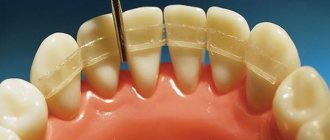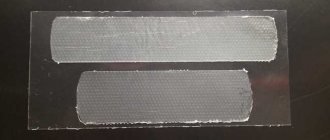Teeth are composed of minerals that provide high strength and prevent premature wear. But due to insufficient oral hygiene or pathological processes, they are affected by caries, which requires mandatory treatment by a dentist. The doctor carries out actions to eliminate the problem in several stages. The final step is filling. Dentistry in Kyiv successfully copes with this task. Doctors have a variety of materials in their arsenal that allow them to restore the entire structure of the tooth.
Requirements for fillings
Filling teeth protects them from infection, restores functionality, and improves aesthetic appearance. The result of treatment largely depends on the choice of filling material. It must meet the following requirements:
- do not pose a health hazard;
- be durable and wear-resistant;
- have good tightness;
- Match the color to the natural shade of the teeth.
Before the procedure, you should consult with your dentist. Modern technologies and materials make it possible to select a tooth filling as accurately as possible, taking into account its shade, texture and transparency.
What types of fillings are there and which are the best?
Usually at the dentist's office you will be asked, “Which dental filling should you get?”
And this question is often confusing, because there are many types of fillings. In order not to get lost in this issue anymore, let’s figure out what types of dental fillings there are, what are the most reliable and the best types.
In dentistry, they are distinguished by composition and use. These can be plastic, ceramic fillings, as well as temporary and permanent.
Temporary ones are used for long-term treatment, when it is necessary to use drugs inside the cavity, and permanent ones are used for instant treatment at a time.
Dental filling is a classic of dentistry, but it is used for not very large damages; if the defect is particularly large, then an alternative to fillings is used - inlays that can cover larger sizes.
Today, clinics use several different materials to make fillings.
Classification of fillings
According to purpose, filling material is divided into 2 groups.
Temporary fillings
The name of the species speaks for itself. Such fillings are also called diagnostic fillings. They are designed to temporarily eliminate a defect, therefore they are characterized by low strength and short service life.
The temporary filling can be easily removed if necessary. The dentist uses it to close a carious cavity when the tooth is very deeply affected, as well as when it is necessary to remove the pulp. When all the risks have passed and the doctor is convinced that everything is fine, the temporary filling is replaced with a permanent one. This filling is performed using one of the materials:
- aqueous dentin – powder, liquid;
- special cements, for example, zinc phosphate;
- dentin paste – powder, oil;
- polymers are special light-curing materials.
Temporary fillings are often used to diagnose a disease, or when there is a need for long-term treatment. For example, if a doctor cleans canals, he uses temporary material. If there is no pain or swelling, it is replaced after a few days.
Such fillings are placed to isolate the tooth cavity or fix the arsenic mass before extracting the nerve. The doctor leaves them for different periods - from 1 day to 2-3 weeks. The material hardens immediately, but since it is fragile, it is better to eat an hour or two after the procedure.
Installation procedure
First you need to make sure that the molar is healthy and the oral cavity is in proper hygienic condition. It is advisable to have it professionally cleaned if it has not been done for a long time. Next, it is necessary to perform anesthesia, if we are not talking about a pulpless tooth.
The preparatory stage continues with the drilling of the affected tissues, which need to be replaced with filling material. After all excess has been removed, a suitable environment is provided using cotton balls and a saliva ejector.
Next, the filling material is directly applied, and special light lamps are used to record the result. Afterwards, the light fillings can be polished and ground to give not only a natural appearance, but also to maintain a comfortable feeling in the mouth. To give additional strength, insulating gaskets and bonds, that is, special adhesive systems, are used. At the end of the entire procedure, varnish is used.
What is taken into account
The peculiarity of installing geleocomposite fillings is that the material must be applied gradually in thin layers. Otherwise, due to rapid hardening, strong pressure may arise inside the tooth and its integrity may be in danger. Today, a specialist receives materials in portions, these are ready-made volumes of photopolymer. Thanks to this approach, the dentist does not spend extra time mixing components; the hygiene of the process is also not the least issue.
Types of permanent fillings
There are many types of permanent fillings. Some of them are practically not used in dentistry today, others are being improved by scientists, which opens up new horizons in medical practice. Preference should be given to one or another material, taking into account the size and location of the tooth in the cavity. You should consult your doctor. He will tell you which fillings are best to install in a particular case.
Metal options (amalgam)
Based on metal alloys. The composition contains mercury, which has a toxic effect on the body. Because of this, they are practically not used in modern practice. Amalgam fillings also contain:
- silver – responsible for strength, has an antiseptic effect;
- tin – provides hardening;
- copper – guarantees a good fit to the tooth.
The material has anti-carious properties, good ductility and wear resistance. Only an experienced doctor can install it. The rare use of amalgam is due to its disadvantages:
- risk of allergic reactions;
- unaesthetic appearance;
- impact on the natural color of enamel;
- low level of adhesion;
- poor adhesive qualities.
Amalgams are not placed on central incisors and canines. They are contraindicated for patients who have metal structures in the oral cavity.
Cement - budget option
Cement fillings were used by dentists until medical science reached a higher level. They are a powder based on zinc oxide with impurities. The price of this material is low, it has anti-caries properties and prevents the development of secondary caries. Installing it is easy. Despite their advantages, cements are rarely used because they also have negative qualities:
- rapid darkening and erasing;
- poor fit to the walls;
- low level of adhesion;
- provoking allergic reactions;
- low strength.
Experts do not recommend using cements for filling in patients under 35 years of age. This is due to the fact that the density and hardness of the material is greater than that of dental tissue, which is why the enamel is quickly destroyed. Further, the tissue is damaged.
How much do the products cost?
Which fillings are best to install based on their cost? It seems that the only correct answer to this question is that all good things come at a price. However, this is not so; in each specific case, one must start from specific features, and only they will dictate the future price of the filling.
However, in order to get at least a little orientation in the pricing policy, you should know that inlays cost in the range of 3000-14000 rubles, compomers from 650 to 1000 rubles, chemically cured composites from 600 to 800 rubles.
Plastic options - a breakthrough in dentistry
Plastic fillings are characterized by excellent strength and long service life if installed correctly. Plastics are made from the following materials:
- Acrylic acids, which are toxic to the human body. This composition can provoke allergies in the patient. Often pores appear in it, which threatens to increase the risk of secondary caries. These dental fillings quickly darken due to smoking and drinking drinks containing dyes. Acrylic acids negatively affect the pulp and often provoke the occurrence of pulpitis.
- Epoxy resin. Its toxicity is much lower. Fillings of this type are installed on chewing teeth, because they darken over time. Resin is not suitable for restoration of the frontal group due to its fragility.
The cost of plastic fillings is reasonable. They are easy to match to the tooth color because they come in many shades.
The cost of plastic fillings is reasonable. They are easy to match to the tooth color because they come in many shades.
Composite Curable Types
Chemical composites contain an organic matrix (approximately 70%) and inorganic particles (at least 30%). The seal consists of a main part and a catalyst. Its advantages:
- high strength;
- uniform curing;
- inertness to saliva;
- excellent wear resistance.
Composites harden in a matter of seconds, so the doctor’s actions must be as fast as possible. Only a good specialist can deliver them efficiently. In addition to restoration work, the material is also used to fix mobile teeth with periodontitis.
Proper care after installation
A large number of patients who have had light-curing fillings in the past think that they can immediately eat any food and there are no restrictions. In fact, a competent specialist will definitely warn you that it is better to wait at least 2 hours before starting a meal. But these are not all the rules that must be followed in order for the filling to retain its properties for as long as possible.
Basic recommendations
- The existing restrictions should not scare you; it is important to comply with them only for the first time - at least for three days. Dentists' advice is as follows: Avoid any products containing dyes - both artificial and natural. This is in addition to the obvious, for example, sparkling waters, black tea, coffee, as well as juices (blueberry, cherry, pomegranate), beet dishes. Otherwise, you should expect some staining of the filling material, which will negatively affect the aesthetics of your smile;
- Avoid starchy and sweet foods so as not to create favorable pathogenic microflora;
- To further strengthen the filling, include more grains, vegetables and fruits in your diet.
And pay attention to the presence of pain in the area of recent intervention. This is allowed for 2-3 days, as it can be caused by a traumatic injection with anesthesia; if the tooth continues to pull and ache, contact your doctor.
If you are confident in the specialist, but pain still occurs, perhaps this is an individual reaction. Alternatively, you may be given a special coating that will seal the dentinal tubules and solve the problem.
Photopolymer – light-curing materials
Photopolymer filling is considered the highest quality. Lighting composites represent the latest generation of materials that provide excellent results. They are produced in the form of a paste that hardens under the influence of UV radiation from a special lamp. They are applied in layers (about 2 mm), which makes it possible to form the shape of the tooth as accurately as possible. Other advantages of the material:
- a wide selection of shades - allows you to choose the desired color, which makes the filling invisible to others;
- strength;
- application for restoration of anterior and lateral teeth;
- low toxicity;
- the highest aesthetic properties compared to other materials;
- slight shrinkage.
A photopolymer filling has virtually no disadvantages. If the restoration technology is followed, it will last for many years. The only negative is the higher price when compared with plastic and cement materials. But the expenses are justified, because the patient receives high quality. Today, dental clinics often work with photopolymers.









